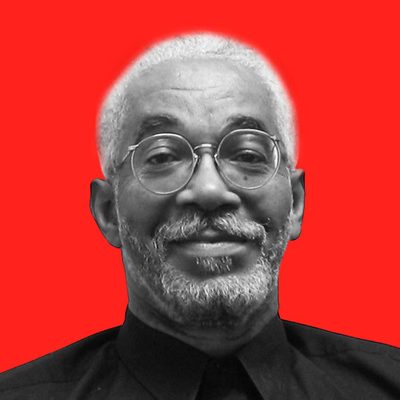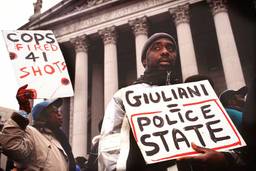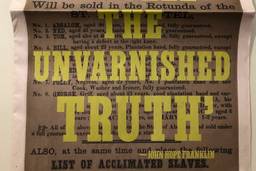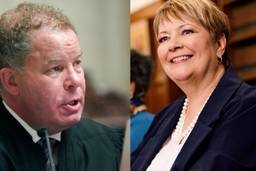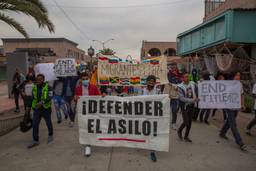Vernon Jarrett, who died on May 23, was a black journalist who covered the African-American story so doggedly he became one of its major characters.
That story charts a journey through racial slavery, Jim Crow apartheid and on through the civil rights revolution, the black power movement, the rise of black elected officials and further still. It’s a story with many twists and turns, and Jarrett chronicled many of its signposts.
At his May 29 funeral at Operation PUSH’s Chicago headquarters, a large, multiracial audience listened respectfully as Jarrett was lovingly evoked and praised as yet another of those signposts. During his stint with the legendary Chicago Defender, where he got his start in 1946 after moving to Chicago from Paris, Tennessee, Jarrett covered most of the major stories of the civil rights movement. He also interviewed W.E.B. DuBois, Paul Robeson, Joe Louis, Jackie Robinson and Martin Luther King Jr., among many others.
In 1970, he got a mainstream gig as the Chicago Tribune’s first black columnist, and for 13 years he wrote about issues from a black perspective, with a leftish, pro-labor tilt that shocked readers of what was one of the Midwest’s most conservative publications. He moved over to the rival Chicago Sun-Times in 1983.
Jarrett believed black journalists should not simply report on events but should serve the struggle for social justice. In 1987, for example, he commandeered the microphone at a memorial rally for his good friend, the late Chicago Mayor Harold Washington, and launched into an emotional speech that astonished the audience.
He was a Sun-Times columnist and board member, but Jarrett passionately urged those assembled to take action against the late mayor’s “scheming” opponents. His actions were criticized severely as overstepping the bounds of professional propriety. He replied that his actions were perfectly reasonable. “I was loud and angry because I was mad as hell,” he recalled in a 1995 interview. “They were trying to bury Harold’s programs even before he was in the ground.”
Jarrett never addressed his critics’ point that his political passions were incongruent with journalistic objectivity. For him, pushing the politics of fairness was journalism’s highest calling. Jarrett may have been out on a limb with his editors, but his beliefs were firmly rooted in the tradition from which he emerged.
Black journalism was born in a spirit of protest, and that tradition has been a touchstone for many black activists who considered journalism a natural extension of their mission. Several of black America’s most pivotal figures — from Frederick Douglass to Ida B. Wells-Barnett to W.E.B. DuBois and Marcus Garvey — were journalists as well.
Jarrett was of that lineage. And although his venue for most of the last 25 years was the mainstream media (where he earned an impressive array of awards, including five Pulitzer Prize nominations), he seldom wavered from the principles of his activist tradition. He decided to focus his energy more specifically within the black community during the final chapter of his life. Until his death at 85 (and his true age has come to light only after his death), Jarrett again was a columnist for the Chicago Defender.
Aside from his professional accomplishments, Jarrett founded a number of institutions that address his major concerns about the black community.
In 1975, he helped create the National Association of Black Journalists, an organization that has since become a power in the industry. In association with officials at the NAACP, Jarrett also created the Afro-Academic, Cultural, Technological and Scientific Olympic (ACT-SO) program, which inspires academic achievement among black youth and generates hundreds of thousands of dollars in scholarships.
In 1993, Jarrett was selected as a professional scholar at the Freedom Forum’s First Amendment Center at Vanderbilt University. He initiated the Vernon Jarrett Oratorical Society for Kids in 1994 as a joint effort with Chicago’s DuSable Museum of African American History and local churches to help introduce black children to what he called the lost art of oratory. A few months back, he enlisted my support for a program he called “Freedom Readers,” the most recent in his relentless attempt to get black youth excited about reading.
Jarrett kept up this busy schedule until he was forced to enter the hospital. He always had a hard time saying “no” or surrendering his battle station to some Young Turk. Just two years ago, for example, he assumed leadership of a faction of the National Association of Black Journalists Chicago chapter because he was discontent with its leadership.
Jarrett’s chapter in the African-American story will be a large, bright one for those of us who knew him and bathed in his light.

I hope you found this article important. Before you leave, I want to ask you to consider supporting our work with a donation. In These Times needs readers like you to help sustain our mission. We don’t depend on—or want—corporate advertising or deep-pocketed billionaires to fund our journalism. We’re supported by you, the reader, so we can focus on covering the issues that matter most to the progressive movement without fear or compromise.
Our work isn’t hidden behind a paywall because of people like you who support our journalism. We want to keep it that way. If you value the work we do and the movements we cover, please consider donating to In These Times.
Salim Muwakkil is a senior editor of In These Times and host of “The Salim Muwakkil Show” on radio station WVON-AM in Chicago. Muwakkil was also contributing columnist for both the Chicago Sun-Times (1993 – 1997) and the Chicago Tribune (1998 – 2005). He is also a co-founder of Pacifica News’ network daily “Democracy Now” program and served as an adjunct professor at Northwestern University, University of Illinois, the Art Institute of Chicago and Chicago’s Columbia College.

